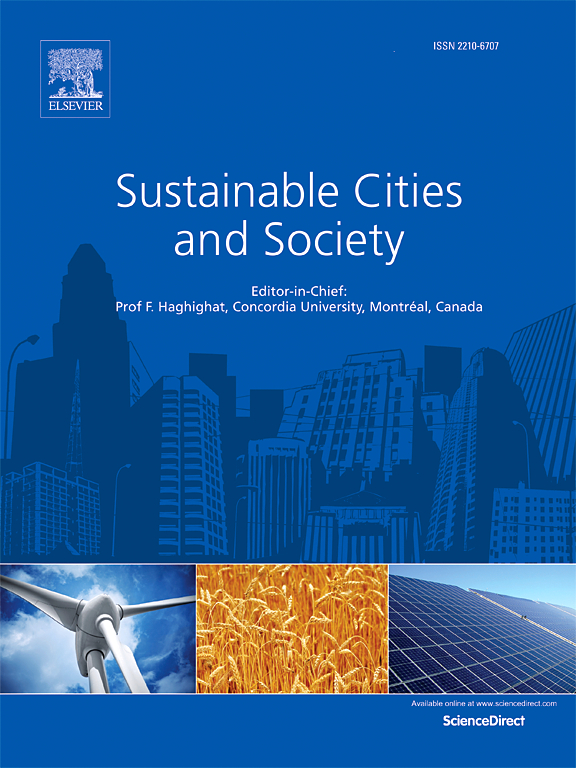Measuring heat transfer index (HTI): A new method to quantify the spatial influence of land surface temperature between adjacent urban spaces
IF 10.5
1区 工程技术
Q1 CONSTRUCTION & BUILDING TECHNOLOGY
引用次数: 0
Abstract
Research on the impact of landscape characteristics on land surface temperature (LST) at the block scale remains relatively limited, especially in terms of thermal effects between patches. Therefore, this study proposed an index of heat transfer index (HTI) that characterizes the thermal propose between patches, and used this index to analyze the spatial influence of LST between adjacent urban spaces in Beijing, China. The analysis results showed that HTI had a significant positive linear correlation with LST, and exhibited a stronger explanatory power (R = 0.343) on the LST of neighboring urban spaces, compared to other 10 indices representing patch size, shape, spatial distribution, and three-dimensional characteristics. The LST changes of different landscape characteristics scenarios based on computational fluid dynamics (CFD) simulation had verified the accuracy of spatial impact of HTI on LST. The linear regression results showed that for every 1 increase in HTI, the LST of the urban spaces would increase by 0.188 °C. Moreover, this study constructed a functional model using the HTI and landscape features, which effectively explained the trend of real LST changes. The findings provide a reference for urban planners to effectively mitigate urban thermal environment in urban design.
求助全文
约1分钟内获得全文
求助全文
来源期刊

Sustainable Cities and Society
Social Sciences-Geography, Planning and Development
CiteScore
22.00
自引率
13.70%
发文量
810
审稿时长
27 days
期刊介绍:
Sustainable Cities and Society (SCS) is an international journal that focuses on fundamental and applied research to promote environmentally sustainable and socially resilient cities. The journal welcomes cross-cutting, multi-disciplinary research in various areas, including:
1. Smart cities and resilient environments;
2. Alternative/clean energy sources, energy distribution, distributed energy generation, and energy demand reduction/management;
3. Monitoring and improving air quality in built environment and cities (e.g., healthy built environment and air quality management);
4. Energy efficient, low/zero carbon, and green buildings/communities;
5. Climate change mitigation and adaptation in urban environments;
6. Green infrastructure and BMPs;
7. Environmental Footprint accounting and management;
8. Urban agriculture and forestry;
9. ICT, smart grid and intelligent infrastructure;
10. Urban design/planning, regulations, legislation, certification, economics, and policy;
11. Social aspects, impacts and resiliency of cities;
12. Behavior monitoring, analysis and change within urban communities;
13. Health monitoring and improvement;
14. Nexus issues related to sustainable cities and societies;
15. Smart city governance;
16. Decision Support Systems for trade-off and uncertainty analysis for improved management of cities and society;
17. Big data, machine learning, and artificial intelligence applications and case studies;
18. Critical infrastructure protection, including security, privacy, forensics, and reliability issues of cyber-physical systems.
19. Water footprint reduction and urban water distribution, harvesting, treatment, reuse and management;
20. Waste reduction and recycling;
21. Wastewater collection, treatment and recycling;
22. Smart, clean and healthy transportation systems and infrastructure;
 求助内容:
求助内容: 应助结果提醒方式:
应助结果提醒方式:


